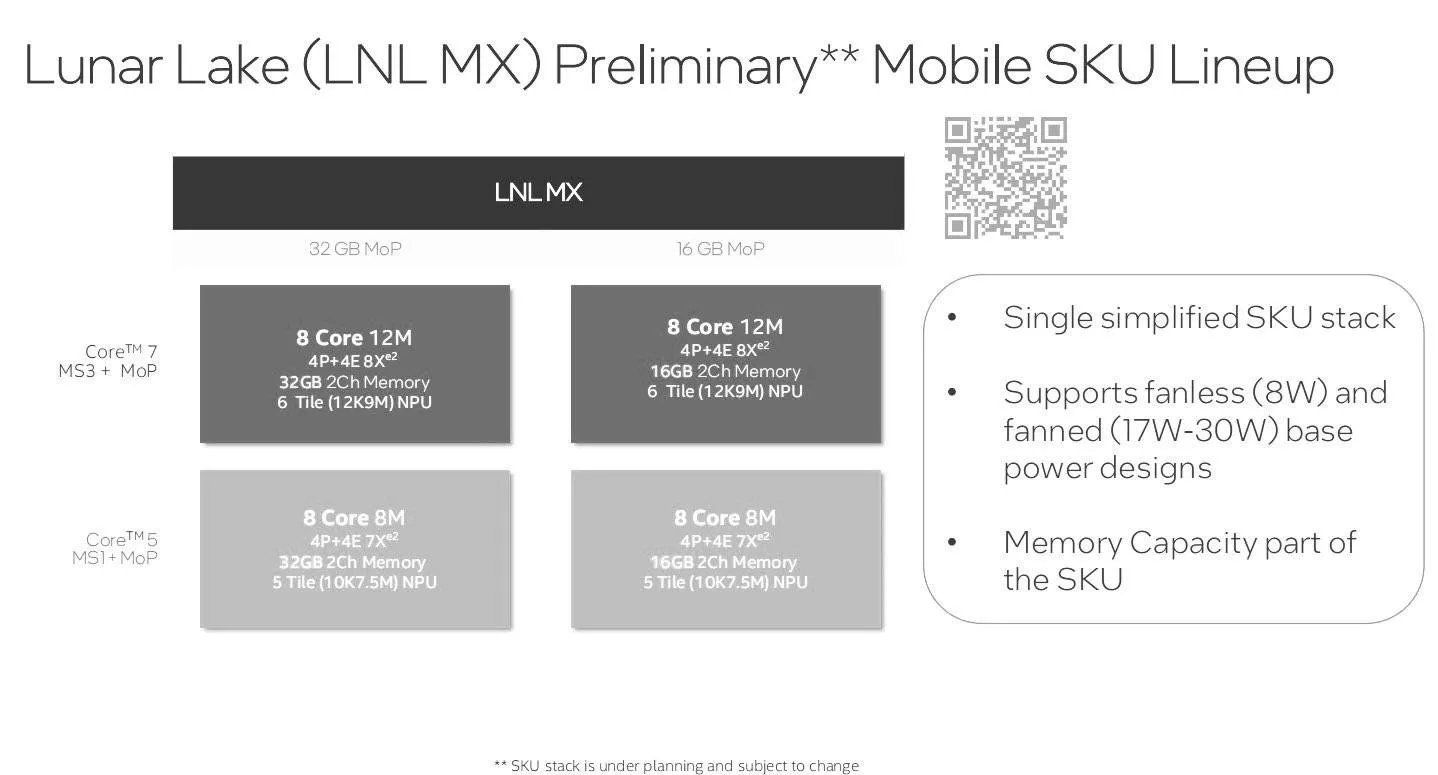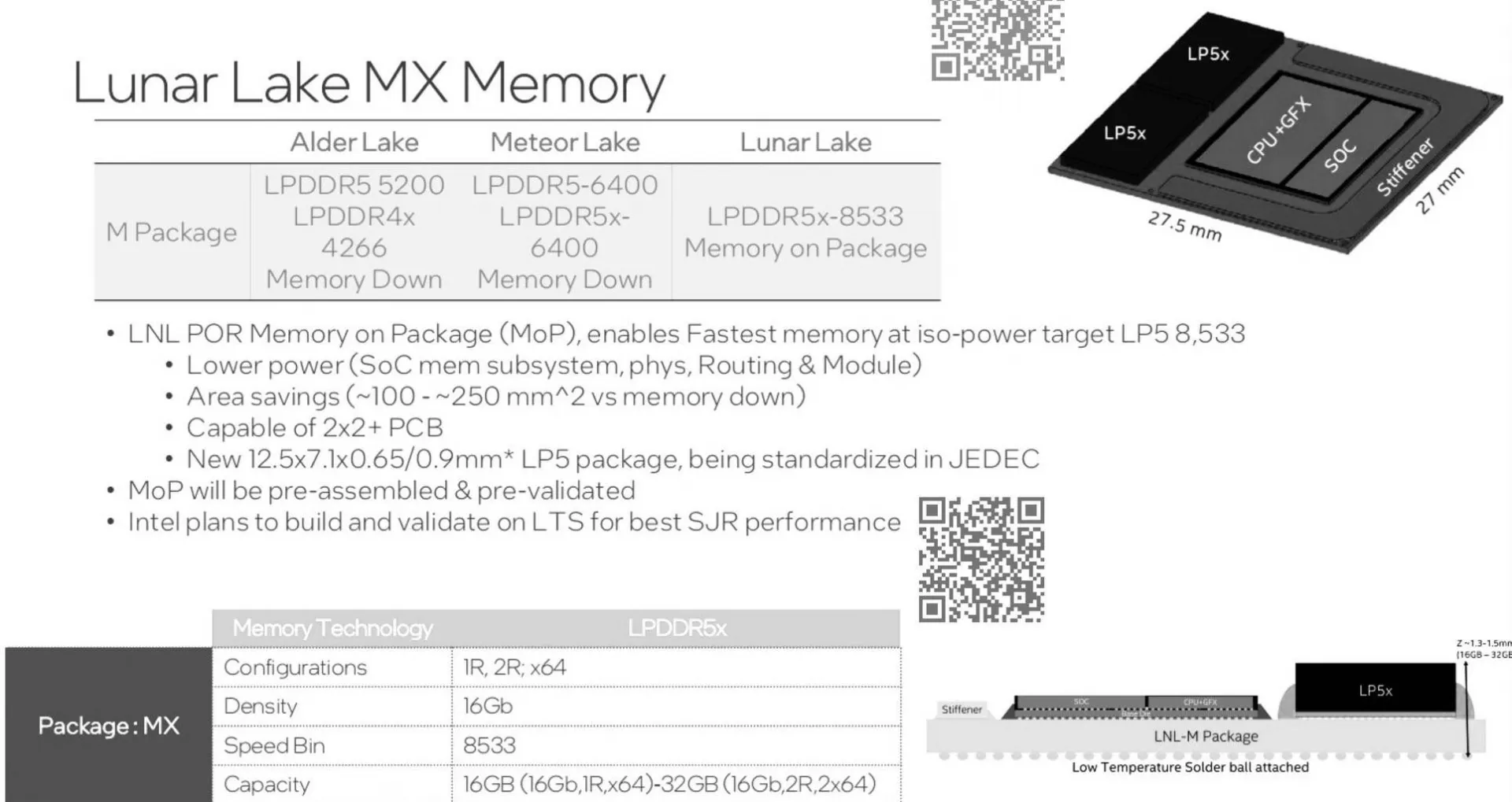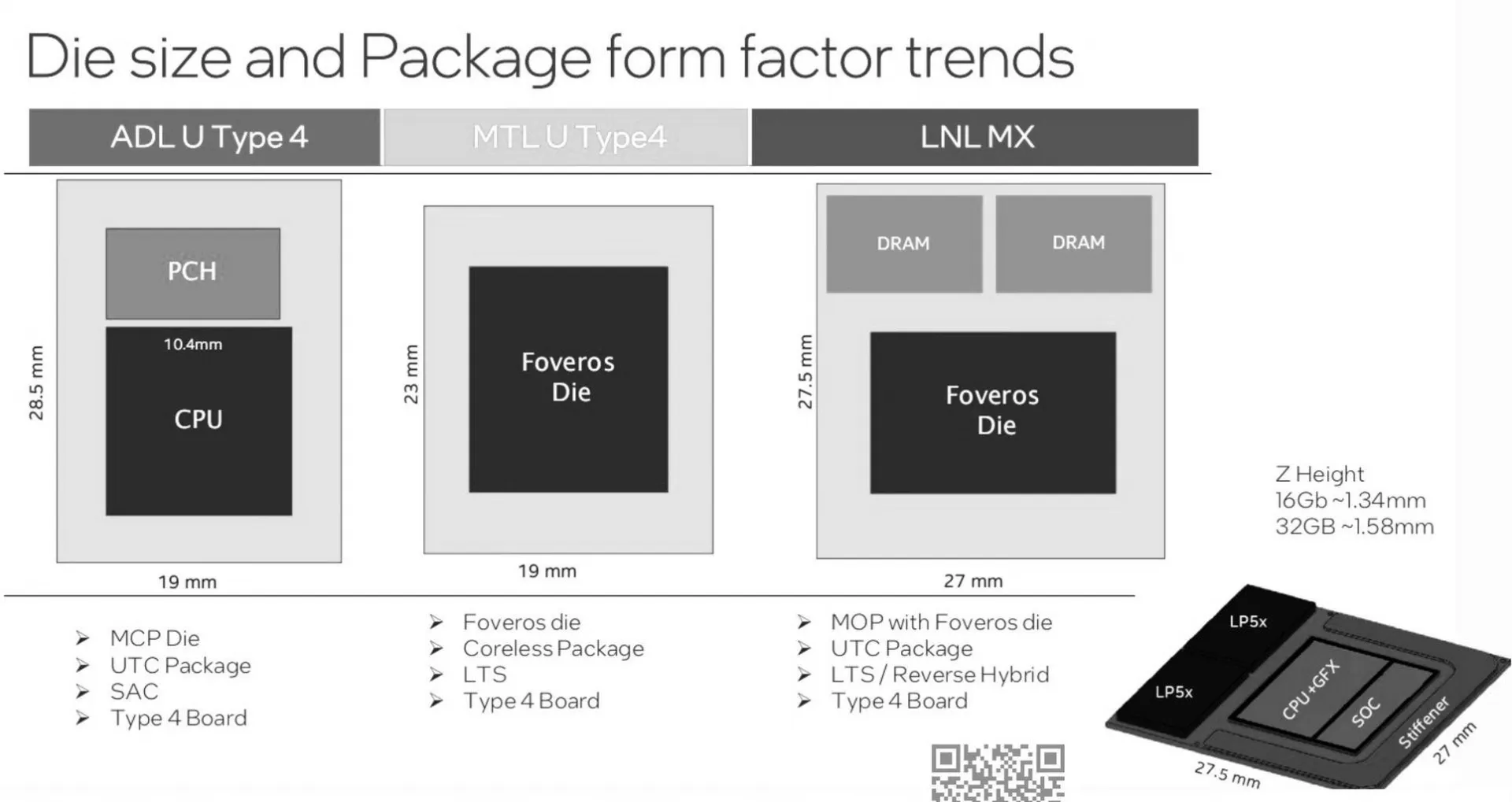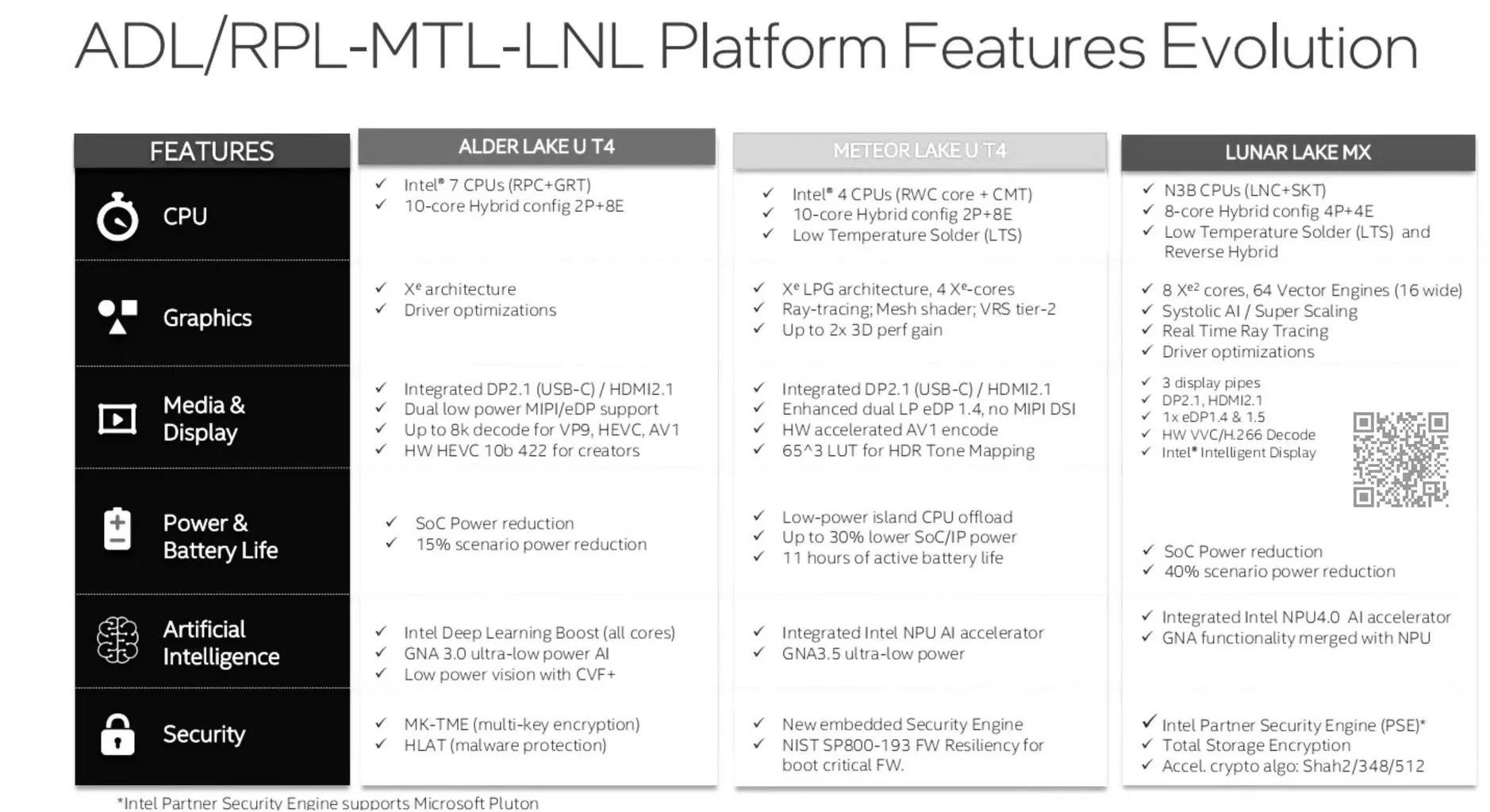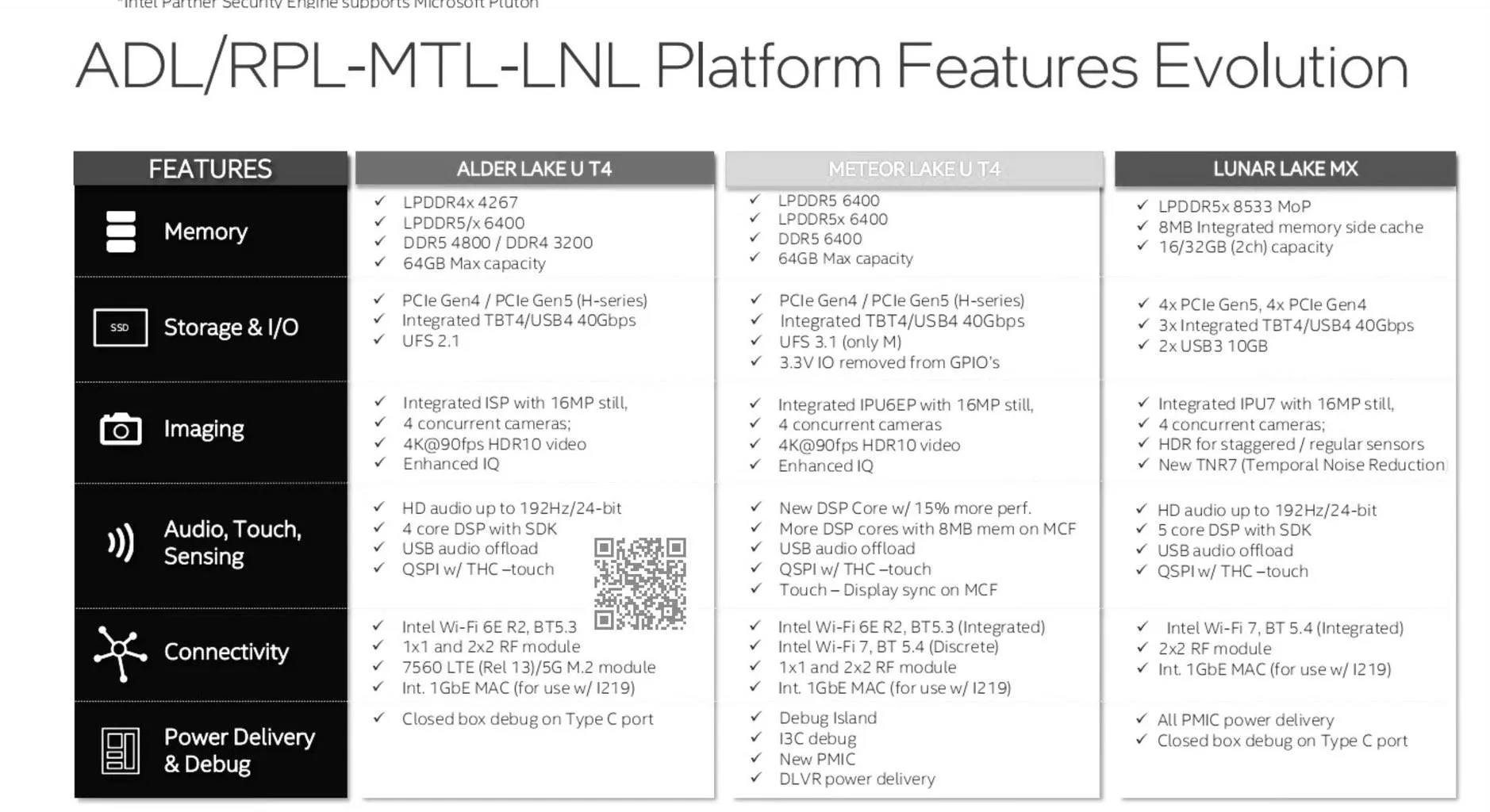Originally shared by a user on Twitter, YuuKi-AnS, details regarding Lunar Lake were briefly available before removal. Nevertheless, an Anandtech forum participant managed to secure a copy of this data. Instead, Lunar Lake focuses on efficient operation, developed in collaboration with Microsoft to enhance integration between software and hardware.
The architecture combines Lion Cove and Skymont cores.
Graphics Architecture: It integrates the Xe2-LPG graphics architecture, boasting 64 Vector Engines and incorporating Systolic AI/Super Scaling technologies, along with capabilities for real-time ray tracing.
Display Compatibility: The Lunar Lake MX GPU supports various display interfaces, including DisplayPort 1.4, HDMI 2.1, and eDP1.4 & 1.5, and features hardware-based VVC/H.266 video decoding.
Memory Capacity: The architecture will present on-package memory configurations of 16 GB and 32 GB.
Production Process: Lunar Lake's CPU tile will utilize the TSMC N3B fabrication process.
Product Variants:
Intel anticipates the release of multiple Lunar Lake MX variants, differentiated by CPU and GPU core arrangements. These variants will support dual-channel LPDDR5X-8533 memory and adopt an on-package memory design.
Lunar Lake package has dimensions of 27.5 mm by 27 mm and comprises a dual-tile design, including a CPU/GPU tile and an SoC tile. It provides multiple connectivity options, such as PCIe Gen5x4, Gen4x4, Thunderbolt 4, and up to three USB4 ports. Additionally, it integrates a BE201 network card for WiFi-7 and Bluetooth 5.4 connectivity, utilizing the CNVio3 interface.
An 8W version of Lunar Lake is reportedly designed for passive cooling solutions, whereas standard variants will have a TDP range of 17 to 30W. The 12W variant is said to offer 2.5 TFLOPS of single-precision compute performance, on par with the Apple M1 chip, with a peak performance potential of up to 3.8 TFLOPS.
The performance comparison between the upcoming Battlemage GPU architecture and the existing Alchemist will become clearer following the release of Meteor Lake chips with the Xe-LPG series.
Intel Lunar Lake MX series is anticipated to be introduced in 2024.
Sources: Videocardz, Anaandtech forums

